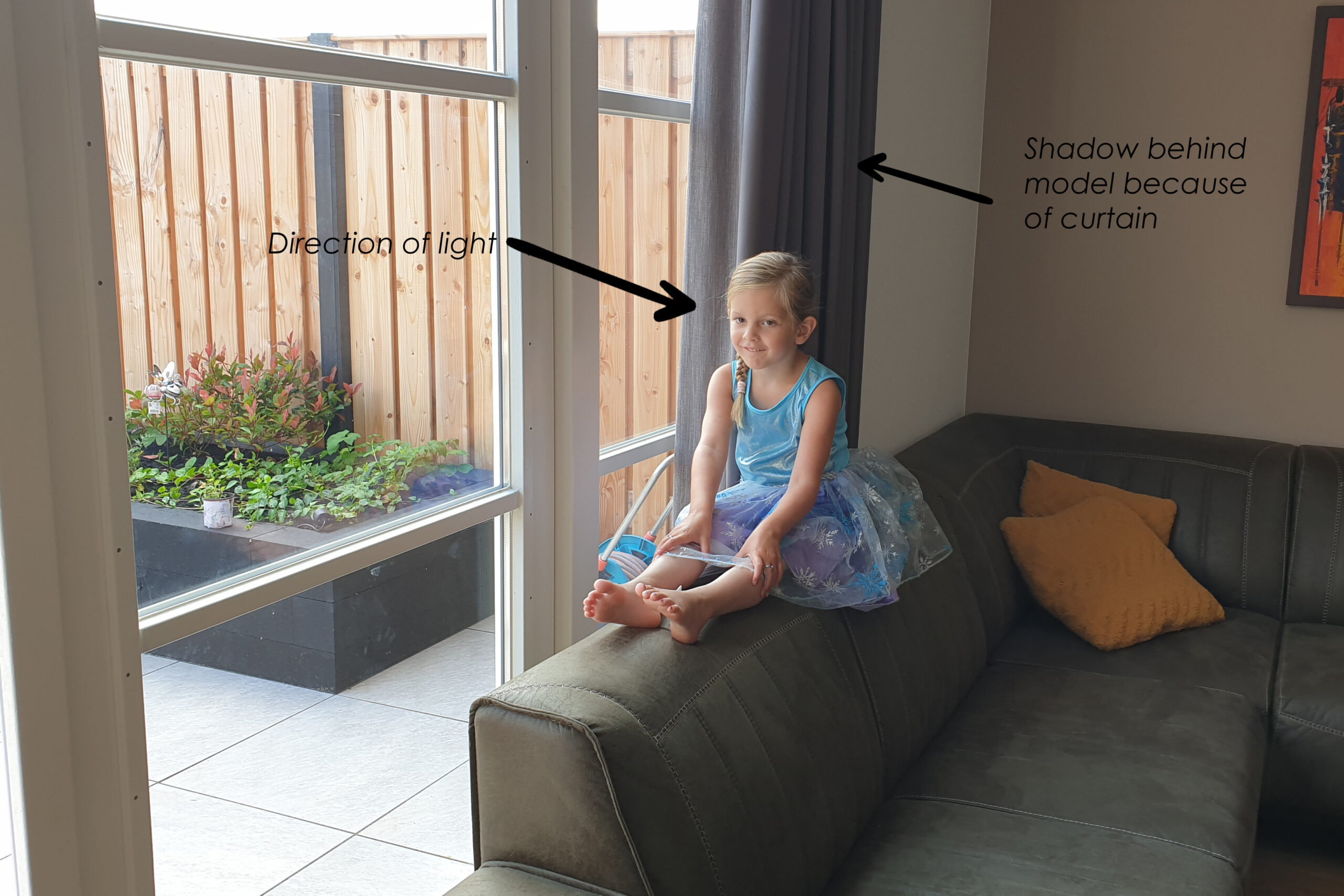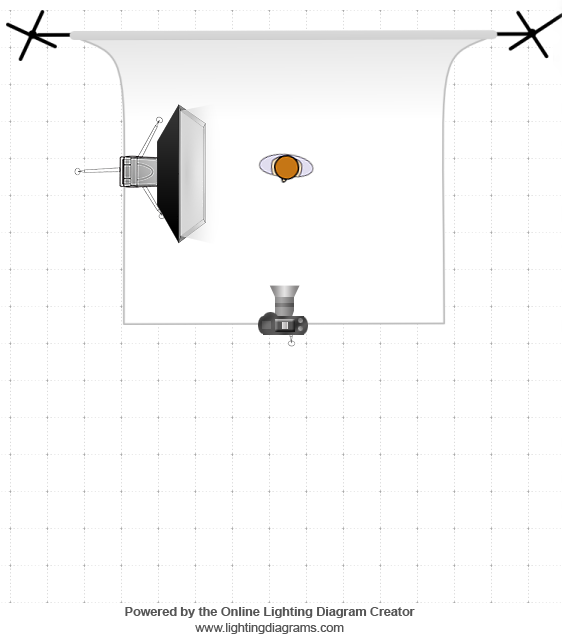Split lighting is the 3rd classical style of lighting that i am going to discuss with you. Do you remember what the previous styles where? If not, check out my articles about Rembrandt & Butterfly lighting.
Would you like to add some drama and punch to your portrait? Then split lighting is a very good option. As the name implies, you split the face in two halves with this type of lighting. One side is illuminated, the other one is in shadow.
When else do you use split lighting?
- For variation
- If you would like to narrow the face of your subject.
With a good split lighting, the transition between light and shadow runs as a line exactly across the nose. If the one you are photographing has a large nose, this type of lighting is usually not very flattering. This is because the split light accentuates the nose.
Below you see the setup, without any fancy equipment, that i've used to create a split light.

A few important sidenotes to this photo:
- The curtain takes away the light behind my model. As you can see in the resulting photo, the background is pretty dark. This makes the model stand out.
- Because i used a very large light source i created a smooth transition between light and shadows.
This is the final result:

As you can see, the split runs exactly across the nose, illuminating one side and keeping the other side in shadow.
One rule about split light that i broke is that i did not hide the model her ear behind the hair. The split light accentuates the ear, which can be distracting. However, rules are there to know, and appropriately deviate when you see fit.
How can you get a split lighting yourself? Use a window or large glass door, as you can see in the example. If your model is in an angle of 90 degrees of the light source, you will get a split lighting. You can also do this in direct sunlight, when the sun is low. Offcourse, you can also use a flash on a tripod.

Next week: Loop lighting, the fourth classical style of lighting.

